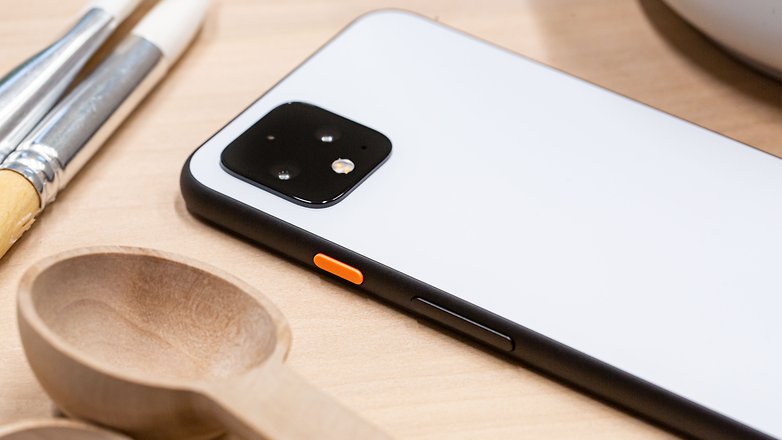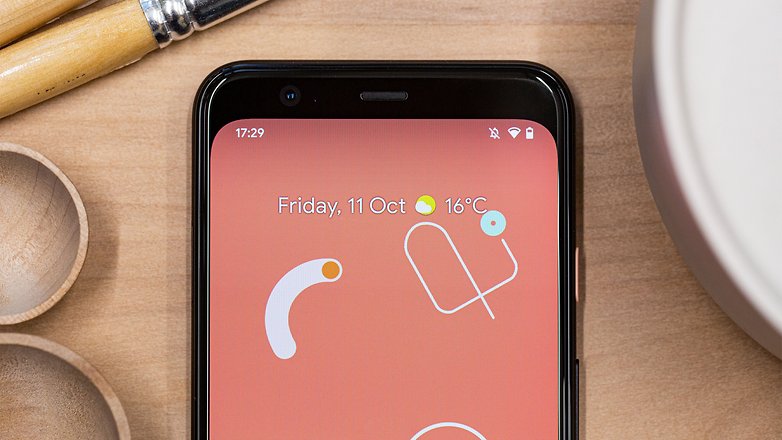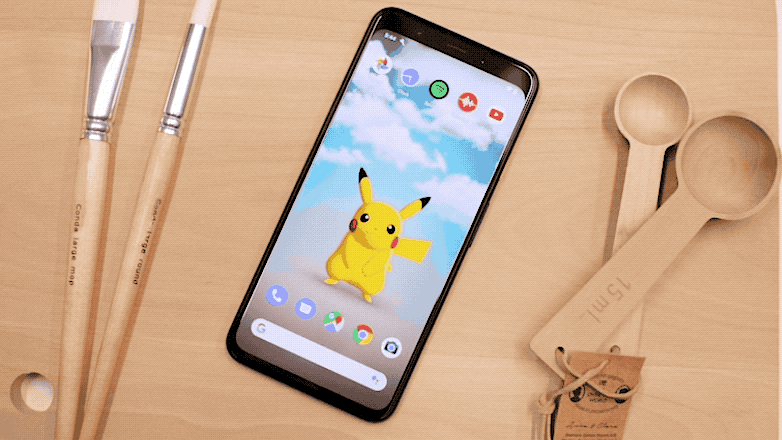Google Pixel 4 vs iPhone 11 Pro: A tight race
The launch of new iPhones always sparks the Android vs. iOS debate, but it also prompts many smartphone fans to consider making the switch in one form or another. The Pixel 4 is perhaps the purest Android device you can buy. The Made by Pixel smartphone is essentially an Android smartphone, with no trace of a third-party touch. It’s Google’s smartphone built for Google’s software, much like Apple creates that special chemistry between hardware and software. But who makes the best combination? Let’s find out.
Google’s Pixel phones have long been the gold standard for Android photography. Despite only having a single 12-megapixel camera sensor, Google’s software has worked wonders behind the scenes. The Pixel 3 camera was extraordinary, and its Night Shot mode was the best on the market until the Huawei P30 Pro came along. This year, however, the competition for the best camera on a smartphone is much fiercer.
Apple went big on the camera this year with its Pro version of the 2019 iPhones. Clearly let down by several Android smartphones, namely the Pixel 3 and the P30 Pro, Apple has decided it wants to be back on top. The iPhone 11 Pro features a triple rear setup and a completely revamped camera app. The result is impressive, and Apple is certainly back on top in terms of photography.

The camera module on the Google Pixel 4 / © NextPit
Google has also decided that it’s finally time to add more sensors to the rear camera. For the first time, a Pixel smartphone has a dual rear camera. For 2019, a 16-megapixel telephoto lens joins the regular sensor, now a 12.2-megapixel lens. Hardware is only part of the battle here because, as we know, it’s on the software side that Google has earned its plaudits in the camera department. These two phones are now doing incredible things with AI and image processing.
However, Apple is ahead when it comes to selfies. The iPhone 11 Pro has a 12-megapixel front-facing camera compared to the Pixel 4's 8-megapixel sensor. There's also no autofocus on Google's smartphone when it comes to taking selfies, and on top of that, Apple has tweaked its software and added new features such as 'Slofies' – allowing users to take slow-motion selfie videos.
This is a very close battle, with Apple finally catching up to the Pixel phones that, with the impressive P30 Pro, have dominated
Moving on to the front-facing camera, Google has packed some face unlock tech worthy of taking on Apple’s impressive Face ID this year. That large top bezel on the front of the Pixel 4 is packed with radar-based motion sensors, a dot projector, and two IR cameras. There’s also a flood illuminator in there. All of this tech combines to create a fast and flawless Face Unlock system.

The new Face Unlock technology is located on the top frame / © NextPit
Apple also updated its Face ID technology on the 2019 iPhone, though the tech is housed in that wide notch rather than a fat bezel. Apple says it’s now 30% faster than before and can work at wider angles than before. We found it to be a worthy upgrade during our testing. Google made the biggest leap here from the previous generation, but it had a lot of ground to make up. Let’s call this a tie, as both the Pixel 4 and iPhone 11 Pro have fantastic systems on board for unlocking your phone with your face.
Apple's new Super Retina XDR display is excellent, but aside from an increased contrast ratio, it's largely unchanged from the iPhone X from 2017. It's still a great display, but if you already have a recent iPhone and are looking for something that feels next-level, you won't find it here. The resolution is still 2,436 x 1,125 pixels (458 ppi).
Google, on the other hand, has broken new ground with the unveiling of its latest Pixel 4 smartphone. Here you're getting a 5.7-inch P-OLED display. It's not as sharp as Apple's (1080 x 2160 pixels, 444 ppi) but it has one trick up its sleeve that Apple can't match – a 90Hz refresh rate.

The Pixel 4 has a refresh rate of 90Hz / © NextPit
Anyone who’s used a OnePlus 7 Pro, 7T, or 7T Pro recently will understand the difference a 90Hz refresh rate makes to the overall smoothness of the display. Scrolling is a joy. It’s hard to go back to your 60s after being 90. For this reason, and this reason alone, I’m giving Google props for display quality.
The debate over iOS and Android is a long one, and it tends to boil down to personal tastes and comfort rather than any objective argument for which is better or worse. With iOS 13 and Android 10, the two mobile platforms are moving ever closer together. It’s been a give-and-take game for a few years now, with both sides nipping at the best ideas in each other’s software and implementing their own versions of features.
Android 10 and iOS both have, as of 2019, a dark mode and system-wide gesture navigation. There's also a voice assistant baked in the form of Google Assistant and Siri, though Google is better in this area.

The iPhone 11 Pro runs iOS 13 / © NextPit
One area where Apple scores points is its new 'Sign in with Apple' functionality. We've seen this for a while now with Google and Facebook, but Apple's service focuses on security and privacy and doesn't share your email address with the website you're visiting, reducing the likelihood of targeted ads and social tracking for its users.
Ultimately, iOS and Android are both great operating systems and for 90% of users, the one you’re more used to is the one you’ll probably enjoy the most. It’s hard to switch between the two and break old habits. One thing I will say, however, is that if you’re thinking about going from iOS to Android or vice versa, be prepared for an adjustment period where things feel strange and counterintuitive at first, but you soon get used to it.
On paper, the battle for best battery life between the iPhone 11 Pro and the Google Pixel 4 seems relatively close. The Apple smartphone has a 3,046 mAh battery while the Google phone has just 2,800 mAh. In practice, however, Apple has drastically improved the efficiency of its software and, thanks to the new A13 Bionic chip, the battery life of the new iPhone line is excellent.
Google says it's also optimized its software to be more power efficient, but since the phones are brand new we haven't had a chance to truly test them over a longer period of use. We'll have to wait and see if those claims hold up. Battery life seems to be another area where Apple has closed the gap on the Pixel, and the traditionally stingy Cupertino company now even throws a decent charger in the box as standard (18 watts).
Whether it's the Pixel or the iPhone, both have current flagship processors. Qualcomm's Snapdragon 855 powers the Pixel 4, while the iPhone uses Apple's own A13 Bionic chip. The Pixel has 6GB of RAM. The iPhone has at least 4GB, but that's not entirely clear yet — and Apple itself has never confirmed it.

Apple's design has also remained unchanged since the iPhone X on the front / © NextPit
There's one more thing they have in common: both smartphones start with 64GB of storage. While Google offers a 128GB model, Apple skips this memory size and instead offers a 256GB variant, as well as a 512GB one.
Google Pixel 4 vs iPhone 11 Pro
| Google Pixel 4 | Apple iPhone 11 Pro | |
|---|---|---|
| Screen | 5.7 inch, OLED | 5.8 inch, OLED 60 Hz |
| Dimensions | 147.1 x 68.8 x 8.2 mm | 144 x 71.4 x 8.1 mm |
| Weight | 162 grams | 188 grams |
| YOU | Android 10 | iOS 13 |
| Processor | Qualcomm Snapdragon 855 | Apple A13 bionic |
| Memory | 6GB RAM | 4GB RAM 64/256/512GB |
| Battery | 2800 mAh | 3079 mAh |
| Camera | Rear: 12 megapixels, f/1.6, 28mm | Rear: 12 megapixels, f/2.4, 13mm, 12 megapixels, f/1.8, 26mm 12 megapixels, f/2.0, 52mm Front: 12 megapixels, f/2.2, 23mm |
| Special features | 3D Face Unlock Direction of movement IP68 | Facial identification IP68 |
Choosing between these two flagship smartphones is a tough call. In areas where it was once easy to pick a winner, the rival has come out on top. Apple has made huge improvements to its camera hardware and software, to the point where it’s no longer a given that the Pixel would be the go-to phone in our newsroom if we needed to take a photo at an event and didn’t have a suitable photographer with us. Likewise, Google’s new Face Unlock system has closed the gap on Apple’s Face ID, which was previously ahead of anything on Android.
Interestingly, the iPhone 11 Pro and Pixel 4 each win in two areas that are very important to consumers: battery life and price. These two things perhaps drive smartphone sales more than any other.
If you're torn between these two devices, go with the operating system you're most familiar with. You won't miss out on much on the other side.